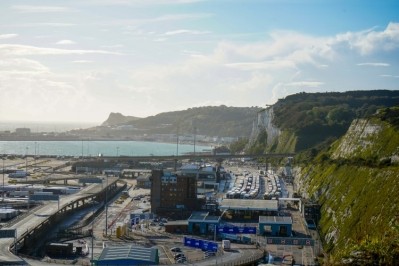UK introduces physical border checks for EU-imported dairy

From today (April 30), the UK is introducing physical checks on medium-risk animal products – including dairy – as well as plants and plant products and high-risk food and feed of non-animal origin from the European Union.
The measures form part of the UK’s post-Brexit border strategy and preceded the introduction of health certificates at the end of January.
Dairy products that will undergo physical checks are those in the medium-risk category, including fresh milk, dairy that contains raw milk (e.g. Roquefort cheese), pasteurized dairy, as well as infant formula, follow-on formula, FSMP and baby food.
The UK government has said that medium-risk commodities will be inspected at a rate between 1-30%, while low-risk goods – including UHT milk – will not be subject to physical inspections. Replying to the , Defra said it intends to undertake official check controls ‘at uniform rates across points…, although we recognise that at the start of checks, while the new implementation arrangements become embedded, some border control posts may require that checks are targeted on a risk basis’.
The checks are ‘border checks are fundamental in protecting our farmers and countryside from the threat of plant and animal diseases’ according to DEFRA, but the department revealed that the scheme would cost £330m to annual business costs and 0.2% to food prices over the next three years. A government spokesperson said the cost of checks was ‘negligible’ compared to the impact of a major disease outbreak, adding that the 2001 Foot and Mouth disease cost the economy more than £12.8bn in 2022 prices.
‘Detailed information has been lacking’
But Marco Forgione, Director General at The Institute of Export and International Trade, said that numerous delays to BTOM’s implementation, including rumours that the second phase could be pushed back, had caused uncertainty and confusion among businesses.
“The message from businesses has been clear - the way in which BTOM has been introduced has caused rather than solved problems,” he said. “Five delays have certainly frustrated many businesses which have repeatedly started to prepare only for their preparations to have to be shelved.
“Even at this late stage there has been confused messages about how the new processes and checks will be carried out.”
He added that businesses on both sides of the Channel had been ‘exasperated’ that the costs to traders were only announced at the start of April while the government confirmed the location of the border control post – in Sevington, more than 20 miles from Dover – late last week.
“Coupled with the new Common User Charge fees that are being introduced, PHA and APHA fees and any potential commercial BCP charges, it may well be a challenging few months for anyone looking to import goods into the UK from the EU,” Forgione said.
“It is vital that businesses affected by these changes are aware of what is happening and how they need to prepare, but the detailed information that is needed to clarify processes has been lacking.”
He added that the uncertainty had been especially damaging for UK’s food supply chain. “With important details of BTOM being confirmed last-minute before checks are due to start, businesses have been confused about how to prepare. Confusion leads to price pressures, which can cause further issues with shrinkflation and the availability of goods,” he said.
“This creates an unmanageable scenario that impacts how businesses trade and, crucially, what is available on shelves with costs ultimately passed on to the consumer.”
The Environment, Food and Rural Affairs Committee (EFRA) chair Sir Robert Goodwill said the parliamentary committee will ‘remain concerned about the measures that will be in place to safeguard against the potential non-compliance which could take place between the point of entry at the Port of Dover and Sevington, 22 miles away’.




